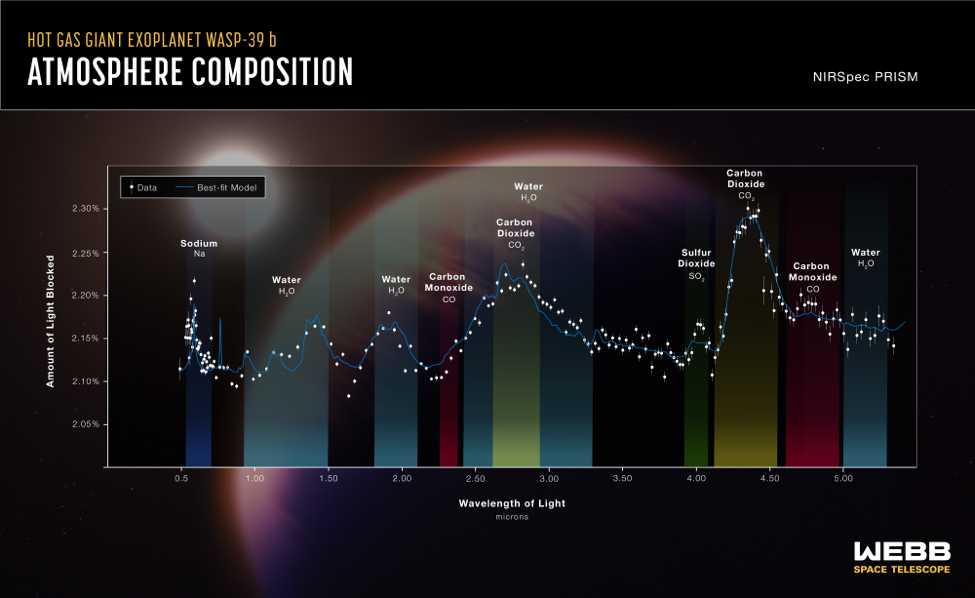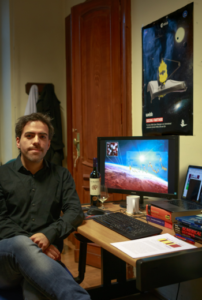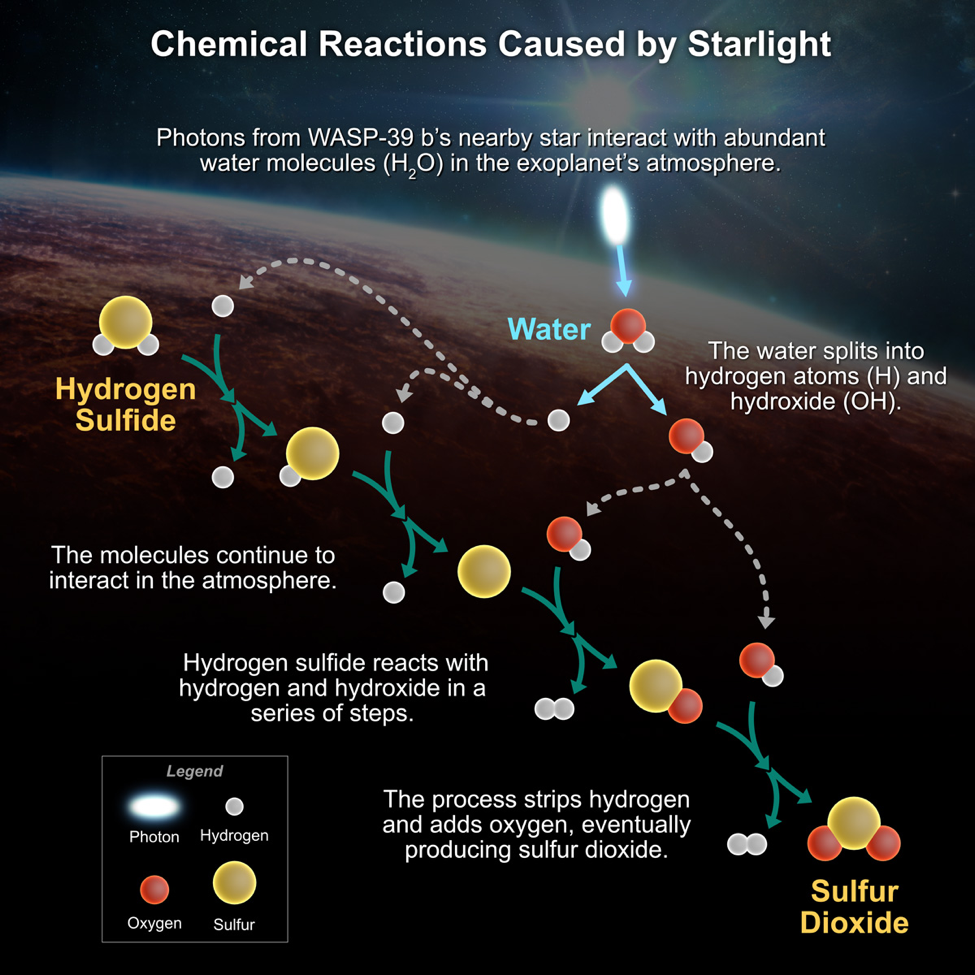by Patricio Cubillos
NASA’s James Webb Space Telescope (JWST) has obtained a molecular and chemical portrait of a distant world’s skies with unprecedented detail. The telescope’s array of highly sensitive instruments was trained on the atmosphere of a “hot Saturn” – a planet about as massive as Saturn with an estimated temperature of 900 degrees Celsius, which orbits a star some 700 light-years away – known as WASP-39 b.
The data provide a full menu of atoms, molecules, and even signs of active chemistry and clouds and also give a hint of how these clouds might look up close: broken up rather than a single, uniform blanket over the planet. The study was carried out by an international team of over a hundred researchers.
Natalie Batalha, an astronomer at the University of California, Santa Cruz, who contributed to coordinate the new research detailed that the team observed the exoplanet with multiple instruments that, together, provide a broad swath of the infrared spectrum and a panoply of chemical fingerprints inaccessible until JWST.
Among the unprecedented revelations is the first detection in an exoplanet atmosphere of sulfur dioxide, a molecule produced from chemical reactions triggered by high-energy light from the planet’s parent star. This is the first time we see concrete evidence of photochemistry – chemical reactions initialized by energetic stellar light – on exoplanets.
To see light from WASP-39 b, JWST tracked the planet as it passed in front of its star, allowing some of the star’s light to filter through the planet’s atmosphere. Different types of chemicals in the atmosphere absorb different colors of the starlight spectrum, so the colors that are missing tell astronomers which molecules are present. The atmospheric constituents detected on WASP-39b also include sodium, potassium, carbon dioxide, carbon monoxide, and water vapor, confirming previous space and ground-based telescope observations.
Patricio Cubillos of the Turin Astrophysical Observatory (OATo), and a member of the international team of researchers, pointed out that for a long time it was suspected that some of these molecules should be there in the atmospheres of these worlds, but astronomers until now did not have the right tools to make a direct, unquestionable detection. However, now thanks to JWST we have crystal-clear evidence of these molecules, and even discovered new and unexpected ones like sulfur dioxide. JWST will completely revolutionize our knowledge of these distant worlds, helping us to understand what they are made of, how they form, and how they evolve.
By so precisely parsing an exoplanet atmosphere, JWST performed well beyond scientists’ expectations – and promise a new phase of exploration among the broad variety of exoplanets in the galaxy.
The suite of discoveries is detailed in a set of five new scientific papers that have been submitted for publication and are available in the following links:
- Early Release Science of the exoplanet WASP-39b with JWST NIRSpec G395H (Alderson et al.)
- Early Release Science of the exoplanet WASP-39b with JWST NIRSpec PRISM (Rustamkulov et al.)
- Early Release Science of the exoplanet WASP-39b with JWST NIRCam (Ahrer et al.)
- Early Release Science of the exoplanet WASP-39b with JWST NIRISS (Feinstein et al.)
- Direct Evidence of Photochemistry in an Exoplanet Atmosphere (Tsai et al.)
See also the news at:
- STScI/NASA: NASA’s Webb Reveals an Exoplanet Atmosphere as Never Seen Before
- The ERS YouTube Channel: Astronomers Discover Sulfur Dioxide in an Exoplanet Atmosphere

The atmospheric composition of the hot gas giant exoplanet WASP-39b has been revealed by NASA’s James Webb Space Telescope. This graphic shows one of the four transmission spectra from JWST’s instruments (NIRSpec PRISM). Credits: NASA, ESA, CSA, Joseph Olmsted (STScI)


